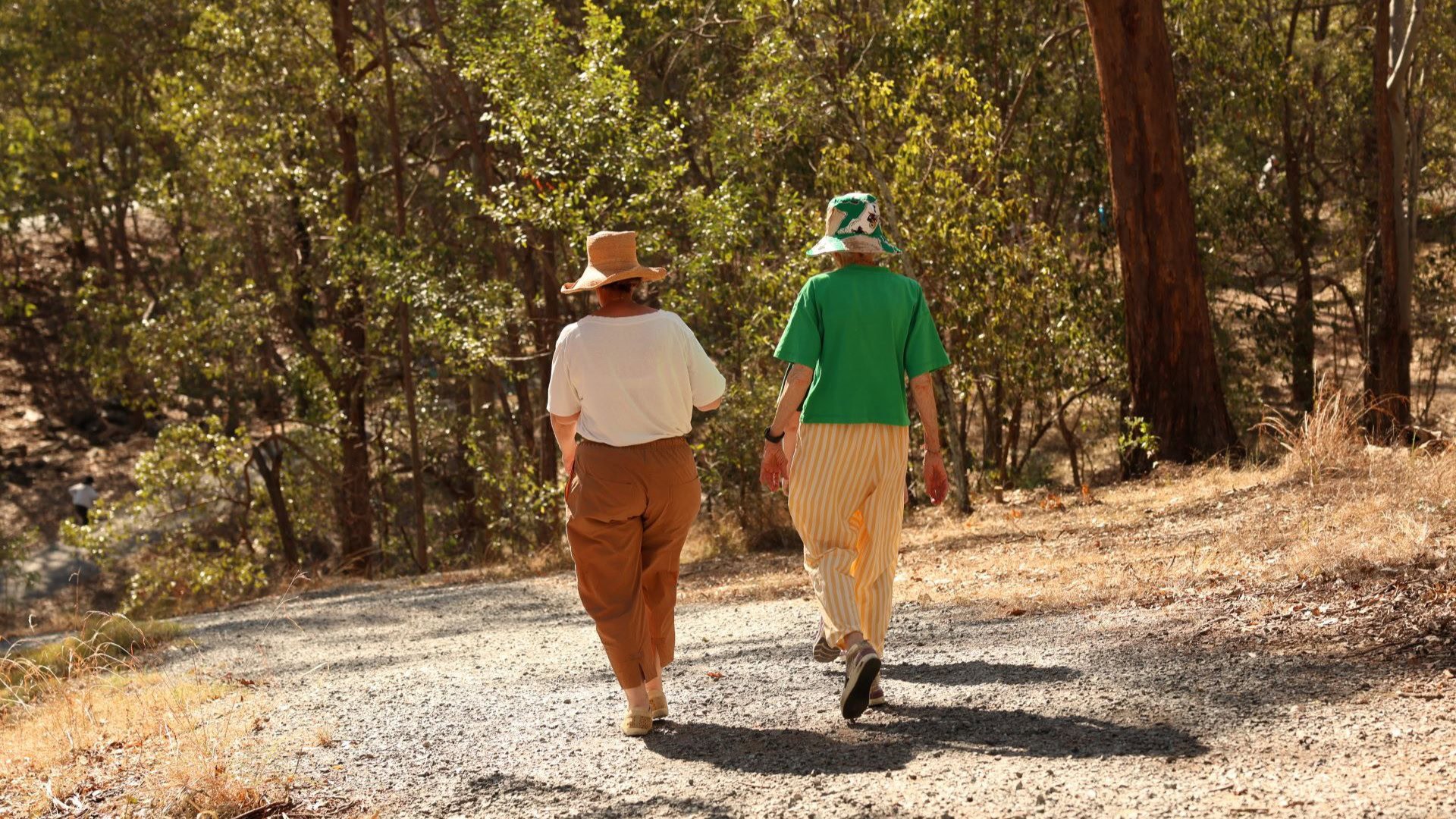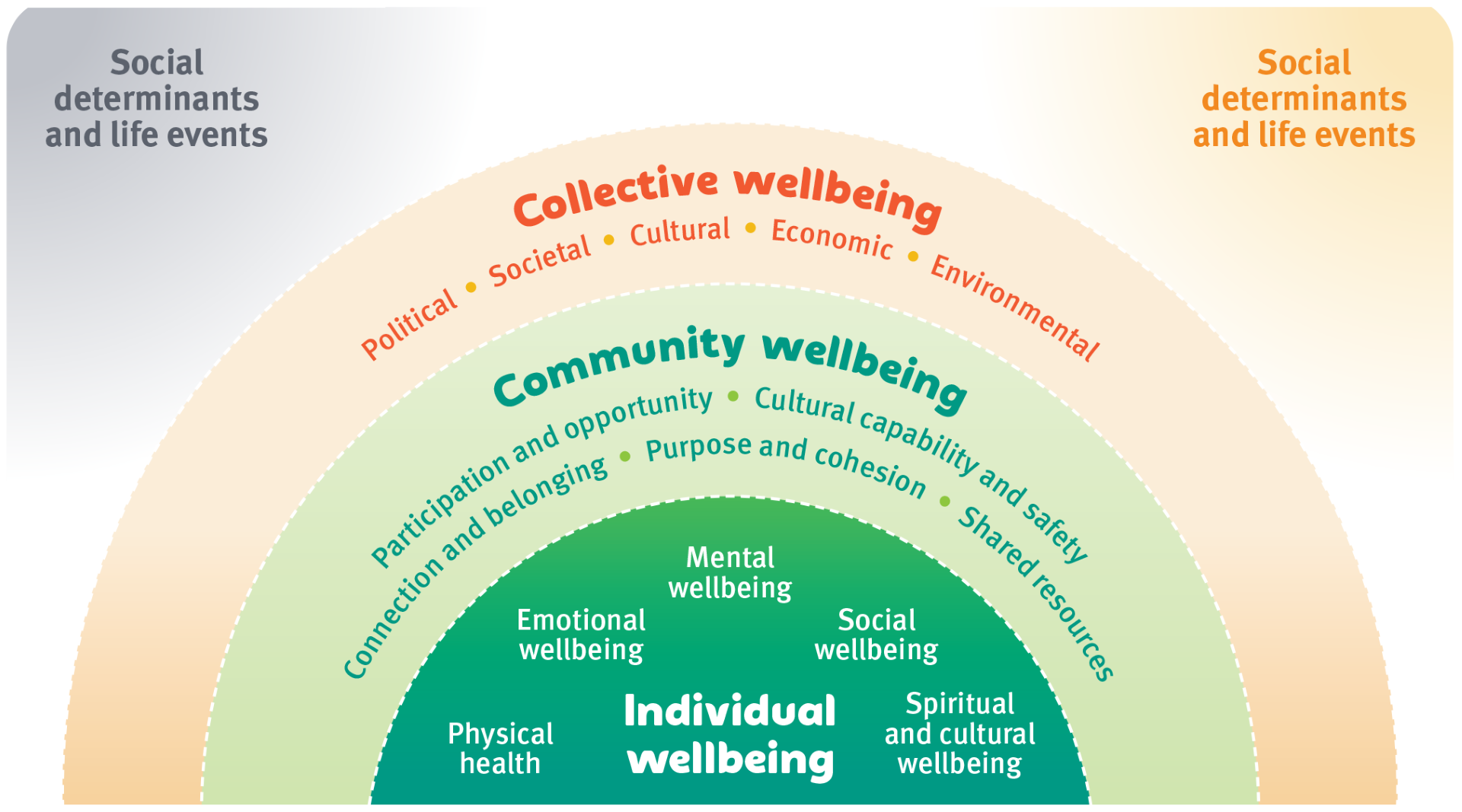
What is wellbeing?
Wellbeing can be defined in different ways, but generally refers to the state of feeling content, healthy, and having balance across various areas of life. It encompasses multiple aspects of life, including physical, mental, emotional, and social health. Wellbeing is not just the absence of illness, but also the presence of positive factors like life satisfaction, resilience, meaningful relationships, and the ability to cope with stress.
Why is wellbeing important?
Apart from making us feel good, wellbeing is important for long-term health. Wellbeing can influence the risk, progression, and management of chronic diseases. Chronic diseases can also significantly impact an individual’s overall wellbeing. Maintaining wellbeing can help us sustain or return to good mental health.
For example, individuals who focus on their wellbeing are more likely to engage in health-promoting behaviours that can help reduce the risk of developing chronic diseases. These behaviours include:
- Regular physical activity
- Healthy eating habits
- Healthy sleeping habits
- Avoiding smoking
- Limiting alcohol consumption
- Maintaining a healthy weight
Individuals who prioritise their wellbeing are also more likely to actively participate in managing their health, which can lead to better outcomes if they do develop a chronic condition. In addition to participating in the above behaviours, this includes:
- Making regular visits to healthcare providers
- Following prescribed treatment plans
- Taking medications as directed
What influences wellbeing?
There are many factors that influence wellbeing. Health and Wellbeing Queensland’s Wellbeing Model shows that individual wellbeing outcomes contribute to community wellbeing, which in turn benefits society (known as the collective). The reverse relationship is also true. The Wellbeing Model also lists the key factors that contribute to wellbeing at each level.
This means it is important to create the conditions that underpin good health and wellbeing. Within communities, this may include having spaces and places that everyone can enjoy and where people can access support. Targeting approaches across all 3 levels is important to improve population level wellbeing.
Mental health and wellbeing
Our mental health is connected to various aspects of wellbeing, including physical, emotional, social, cultural, and environmental factors. Wellbeing supports good mental health outcomes by promoting positive health behaviours and physical health, and enhancing relationships. It also promotes community engagement, and improves workforce participation, job performance and organisational productivity.
Thriving Lives, Connected Communities was developed by Health and Wellbeing Queensland in partnership with the Queensland Mental Health Commission and highlights evidence-based areas for action to improve mental health and wellbeing. These areas were informed by consultation with non-government agencies, peak bodies, and community organisations, including people with lived-living experience.
Protective and risk factors
There are a number of protective and risk factors to consider for mental health and wellbeing. Understanding these protective and risk factors can help people to take action to improve mental health outcomes at an individual, community and population level.
| Protective factors | Risk factors | |
| Social |
|
|
| Life events |
|
|
| Community |
|
|
| Relational |
|
|
| Individual |
|
|
Health and Wellbeing Queensland supports a range of programs which empower Queenslanders to live healthier lives by increasing capability, opportunity and motivation. These programs include:
- Working to change Queensland’s food and physical activity environments (the many factors that influence an individual’s food and physical activity choices) to make the healthy option the easy option
- Supporting equitable access to effective prevention services and supportive healthcare
- Empowering Queenslanders to eat healthier food and less discretionary food (foods which are not essential for our health), incorporate more physical activity and reduce sedentary behaviour, such as through the Motivate + Activate program to improve physical activity in young people.
- Making healthy food and drinks more accessible in remote Queensland by:
- Optimising the supply chain to ensure quality, affordable, healthy food is consistently available year-round
- Improving the accessibility and availability of healthy food by supporting sustainable local food production
- Empowering communities to choose and prepare healthy food by building awareness, capability and environments for good nutrition
- Supporting healthy homes that enable the use of healthy food with reliable and functional facilities and equipment
- Encouraging and supporting community-led initiatives across Queensland to improve health and wellbeing within the community. The objectives of the scheme are to improve health and wellbeing through support for nutrition, physical activity, sleep, wellbeing and/or health equity.
- Improving health and wellbeing across the community through online health checks and personalised coaching to connect individuals to wellbeing programs suited to their needs.
Find out more
Visit our Programs and Projects page for other Health and Wellbeing Queensland initiatives that are improving wellbeing across the state. View our Healthy Happenings resources to get tips on behaviours which improve wellbeing.
For more information and support specifically on mental health and wellbeing, please visit How to get help.
[1] World Health Organization. World mental health report: transforming mental health for all 2022. Available from: https://www.who.int/publications/i/item/9789240049338
Last updated 21 March 2025




